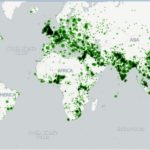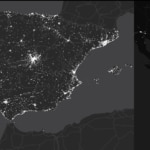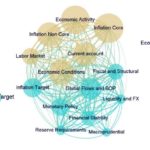The refugee crisis, political events and the social reaction to them, natural disasters such as Hurricane Harvey or Hurricane Irma, the sentiments of people or central banks… there is an ever-increasing number of events whose economic impact, in a world of growing risk and uncertainty, is hard to gauge using traditional methods. That’s where ‘Big Data’ and ‘Data Science’ techniques come in, helping to quantify these trends from micro to macro level.

How does BBVA Research use Big Data? BBVA’s studies service analyzes geopolitical, political, social and economic issues, using large-scale databases and quantitative data-driven methods, rather than qualitative introspection. What datasets does it use? Media data, BBVA aggregate and anonymized data, along with press releases, meeting minutes and speeches available on central banks’ webpages. What results does it achieve? BBVA Research stands at the frontier of research in the geopolitical and economic area, contributing to innovation in this field.
Taking the pulse of geopolitics, cyberattacks and trade
Tracking geopolitical events in real time, BBVA Research can identify the main hotspots and their potential indirect effects. It can also analyze historical trends, or spot current areas of conflict and their exact geolocation. For example, ‘Big data’ helps to easily and accurately identify the origin and destination of migratory flows in the refugee crisis that Europe has been suffering since 2015.
Also, it can render maps reflecting the impact of political and economic events across the world, such as the spillover effects of China’s economic slowdown.
New threats, such as cyberattacks, can also be monitored. Based on how media outlets report on cyberattacks, breaches and online security-related issues, BBVA Research can determine which parts of the world were hit the hardest by these events in 2015 and 2016.

Media coverage of cyber-attacks between 2015 and 2016 - GDELT and BBVA Research
Databases and online searches: sources of economic information
BBVA Research relies on GDELT (Global Database on Events, Location and Time) datasets to monitor all news published in digital and social media across the globe. GDELT uses information updated every 15 minutes and different algorithms to determine the tone or feeling of news.
Also, using aggregate and anonymized data about customer transactions, BBVA Research can draw up maps showing the distribution of card transactions in Spain and Mexico.

In Spain: 710 million card transactions from 1 million points of sale by 53 million people, representing €43 billion/ In Mexico: 1.500 million card transactions from 1.1 million points of sale by 88 million people, representing €41 billion. - BBVA
Using the bank´s own data, BBVA Research is able to replicate banking and trade activity trends at a domestic level or increase granularity at a regional level.
BBVA Research also uses other databases. For example, a database with aggregate information about Google queries related to Spain as a tourist destination. Google’s tourism searches follow the same seasonal pattern as tourism statistics, anticipating one or two months in advance. Measuring Google queries, given the increasing use of Internet searches, offers great potential to predict future developments.
Technology and new algorithms make it possible to convert news text into sentiment and then into numbers that can be used as source of information. The ability to incorporate news helps to improve monthly economic measurement models and measure certain events over time, such as how financial markets react to them. We’re not just talking about using the perception of the pace of economic activity, but also about complementing official data, in order to track and analyze risks in real time, among other things.
Word clouds, sentiment and topic networks
As for external sources, BBVA Research also analyzes how official institutions speak, such as central banks and regulators. BBVA Research processes texts extracted from official documents, to analyze which topics they cover. Once it identifies the topics, it can analyze the tone employed for each one and the relationship between them. That’s how, for example, it can figure out what the “Central Bank is talking about…,” the degree of intensity or sentiment, and how this relates to the rest of a report. Thanks to data mining and machine learning techniques, BBVA can monitor how the sentiments and stances on each topic change, how interests shift and how relations between these topics evolve over time.
For example, between 2006 and 2009 inflation was the core topic of the policy of Turkey’s central bank. Between 2010 and 2015, the years of the global financial crisis, the focus shifted towards economic activity. In 2016 and 2017, the central bank has worked on price stability. BBVA Research also detected that Turkey´s monetary policy has grown more complex since the international financial crisis began.

Evolution of the core topics of the monetary policy of the Central Bank of Turkey between 2010 and 2017. - BBVA Research